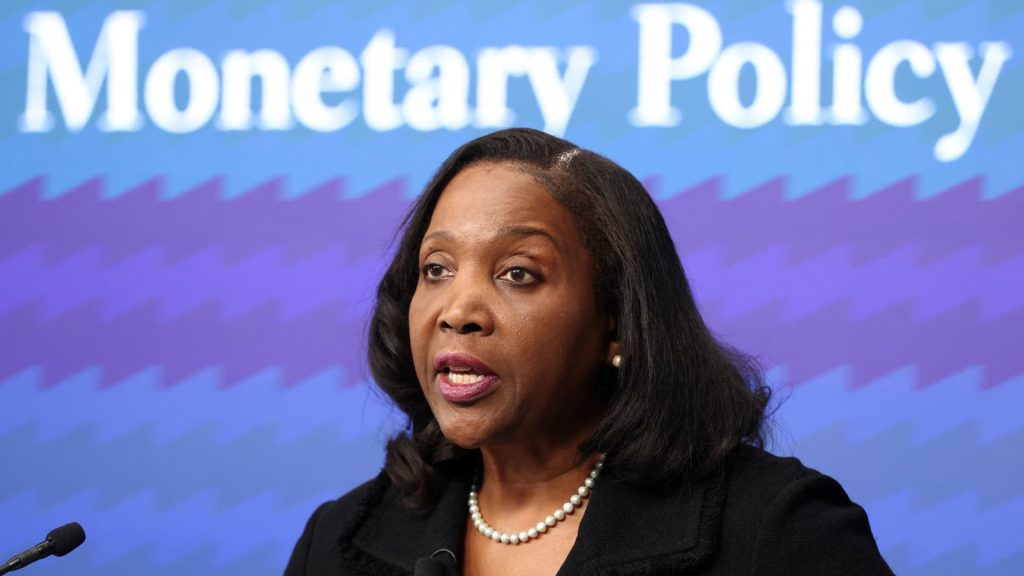Member of the Federal Reserve Board of Governors Lisa Cook speaks on “The Outlook for the Economy and Monetary Policy” at the Brookings Institution in Washington, D.C., U.S., November 3, 2025.
Kevin Lamarque | Reuters
Federal Reserve Governor Lisa Cook, in her first policy speech since President Donald Trump tried to remove her from office, said Monday that she supported the recent interest rate reduction and indicated she would be open to more.
Since Trump made his move in August to sack Cook on accusations of mortgage fraud, she has kept a relatively low profile outside of the court battles that have kept her in her position at the central bank.
In remarks before the Brookings Institution in Washington, D.C., the policymaker laid out her views on the economy and where she thinks monetary policy should land. Generally, she sees the economy as solid with risks to both the Fed’s goals of low unemployment and stable inflation.
Cook said she sided with the 10-2 vote on the Federal Open Market Committee to lower the central bank’s benchmark interest rate by a quarter percentage point, the second meeting in a row that saw a cut.
“I viewed that decision as appropriate, because I believe that the downside risks to employment are greater than the upside risks to inflation. I view the latest reduction in the fed funds rate as another gradual step toward normalization,” she said.
Trump has been blocked by courts from removing Cook in what has been seen as a pivotal issue for central bank independence. Though White House officials have said Cook lied in forms she filled out for federally guaranteed home mortgages, she has not been convicted of anything nor have any charges even been brought.
Cook has cited “clerical errors” in the loan applications. She declined to comment on the matter during a question-and-answer session, saying “it would be inappropriate” while noting she is “beyond grateful” for the support she has received.
In the meantime, she has continued her duties at the Fed, which lowered its key federal funds rate in September for the first time since December.
As for the path going forward, Cook said she is sticking with a data-dependent position. FOMC officials in September indicated an additional cut is likely before the end of the year.
“As always, I determine my monetary policy stance each meeting based on the incoming data from a wide variety of sources, the evolution of my outlook, and the balance of risks,” she said. “Every meeting, including December’s, is a live meeting.”
“Certainly we want to see if tariff effects are persistent, to see if firms are waiting to raise prices, to see what they’ve done with inventory,” she added. “So there’s a lot to look at. There’s a lot to anticipate with the December meeting coming up.”
Fed Chair Jerome Powell rattled markets during his Wednesday post-meeting news conference when he said the December cut is not a sure thing. Powell noted a wide dispersion of opinions on the committee, known more often for its consensus approach to policy.
“Looking ahead, policy is not on a predetermined path,” Cook said, using what has become boilerplate language for Fed officials. “We are at a moment when risks to both sides of the dual mandate are elevated.”
On inflation, she said Trump’s tariffs have not fully made their way through the economy. However, she said the most likely outcome is a “one-time increase” in prices not likely to fuel inflation over the longer term.

